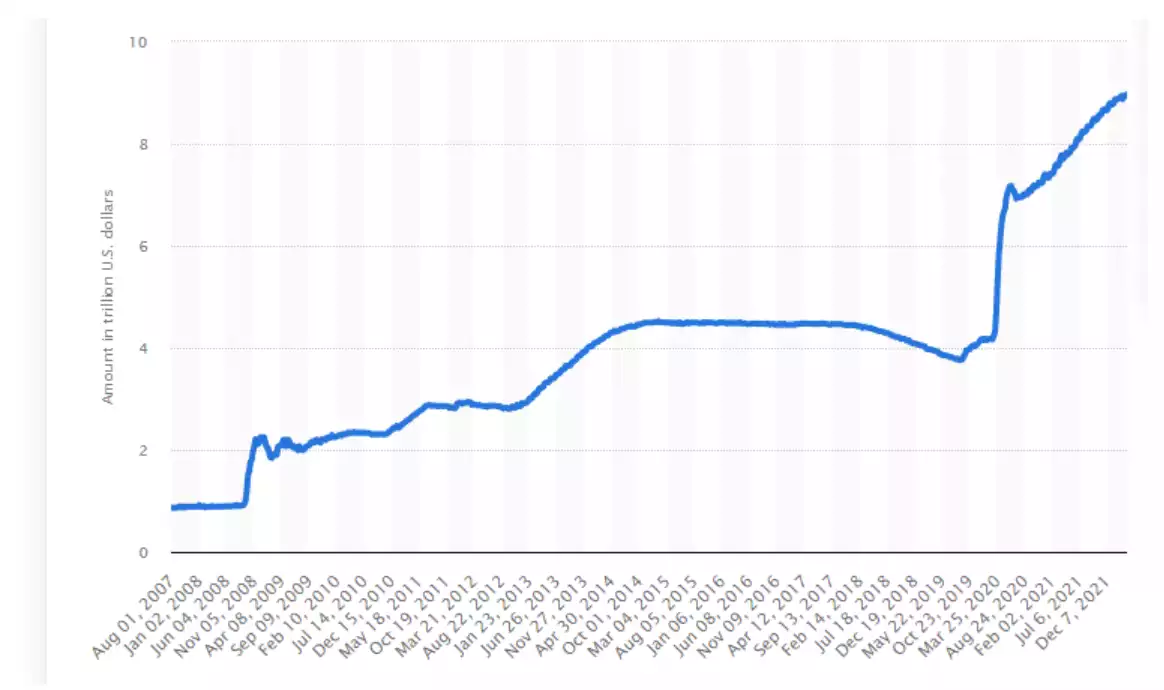Fed Balance Sheet Reduction Incoming
News
|
Posted 11/04/2022
|
6613
Late last week the FOMC minutes from the previous meeting were made public. In them we found that Fed is targeting a maximum of $95bn in balance sheet reduction per month starting in May. The figure is made up of $60bn in treasuries and $35bn in mortgage-backed securities. Normally when variously dated US government bonds (treasuries) mature, they are ‘rebought’ by the Federal Reserve. Since the Repo Meltdown in Sept 2019, the Federal reserve has not only rolled over all of the existing debts, but has been buying more. We can see that since July 2020, the debt expansion has been consistent, rising on a very even angle into the top right of the chart.

What the minutes show is that they are planning to actually reduce the total debt levels for the first time since late 2017-19. The proposed tightening is double the size of the previous one, and the result last time was a stock market meltdown in late 2018 that led to the printing presses coming back into overdrive. This movement away from ‘ultra-easy monetary policy’ comes as the 2 and 10 year treasuries have inverted as we covered in news at the time. The 5 year yields were higher than the 30 year briefly. Inversions of the yield curve are the number one indicator of recessions, and the Fed is jacking up rates and reducing the money supply at same time. Read as: pain ahead.
The minutes also made it clear that inflation is recognised as a major problem, and rate hikes are likely to be 50 basis points at each meeting as opposed to the standard 25. The consensus was to raise rates by the full half percentage at the just past March meeting, but Ukraine concerns saw the group arrive at a 0.25% increase. With official inflation north of 8% in the US, the board of governors are going to need to jack rates up a lot higher to get positive real rates. Although at this stage the adage that the Fed is ‘stuck between a rock and a hard place’ is becoming increasingly ubiquitous in the mainstream analysis of Fed policy. The ‘rock’ is leaving interest rates low and seeing the currency continue to lose people’s faith; and the ‘hard place’ is saving the US Dollar but tanking the stock market which at this stage is full of zombie companies that can only survive by borrowing at near-zero rates to buy back their own stock.